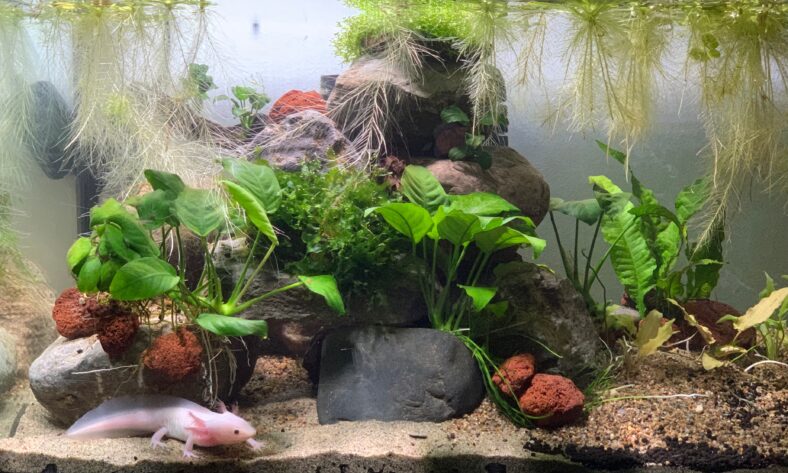This Cute Amphibian With A Permanent Smile Is Critically Endangered In The Wild

The axolotl is an amphibian in the salamander family with a cute, permanent smile and feathery gills. You may have seen its likeness in the form of a plushie in a store window. Axolotls are adorable, charismatic, and endearing.
“They don’t really have feathers, but their gills are feathery,” said James Monaghan, a professor of biology at Northeastern University.
“They have a constant little smile on their face. If you were to create a cute animal that you couldn’t think existed naturally, it’s kind of the axolotl. It’s got the vibes of a dragon, but a nice dragon.”
In recent years, these creatures have been rising in popularity but decreasing in numbers. The species has become critically endangered due to climate change, pollution, and urbanization.
The axolotl has its roots in Mexican culture. It was named after Xolotl, the Mexican god of fire and lightning.
According to Aztec mythology, Xolotl was said to be able to transform into a salamander to avoid being sacrificed so the sun and moon could travel through the sky. Eventually, he was captured and killed.
The Aztecs first discovered the axolotl in the 13th century, when they settled the Valley of Mexico around what is now known as Mexico City. They found the large salamander in a lake. They also killed the axolotls for food.
Axolotls can grow up to nine inches long, but some have reached more than 12 inches. On average, they live for five to six years in captivity, though some have lived for up to 17 years. They eat anything they can snatch up, such as spiders, insects, mollusks, and fish.
These creatures also have this amazing ability to regenerate body parts after serious injury. They are even capable of regrowing their lung.

Sign up for Chip Chick’s newsletter and get stories like this delivered to your inbox.
In 1864, the first scientific specimens of the salamander were captured from a canal system around Lake Xochimilco outside Mexico City. The lake is the only place where they are still found in the wild.
Unlike most amphibians, axolotls live their whole lives in the water. Soon enough, scientists were busy working with the axolotl genome to understand its regenerative capabilities.
The entire stock of modern axolotls in today’s laboratories and pet stores is descended from the original population in 1864.
New genetic material was only introduced into the line occasionally. Now, the wild population of axolotls has been gradually disappearing.
“Maybe up to the 1950s, you could put a net in Lake Xochimilco, the canal system, and pull up adult axolotls. And then every decade since, it’s just crashed,” said Monaghan.
“To the point now that they’re critically endangered, and it takes weeks to even find one.”
Axolotls are extremely sensitive to changes in their environment. As global temperatures rise, their survival is being put at risk.
Furthermore, the expansion of Mexico City and the introduction of invasive species, such as tilapia and carp fish, are contributing to their decline.
But since axolotls are featured in popular video games like Minecraft and are so beloved among young people, this public awareness of them can drive conservation efforts and save the species.
“The inclusion of axolotls and their in-game rareness mirroring their real-world endangered status is a fantastic example of how game mechanics can reinforce educational messages,” stated Mojang, the company that makes Minecraft.
More About:Animals





